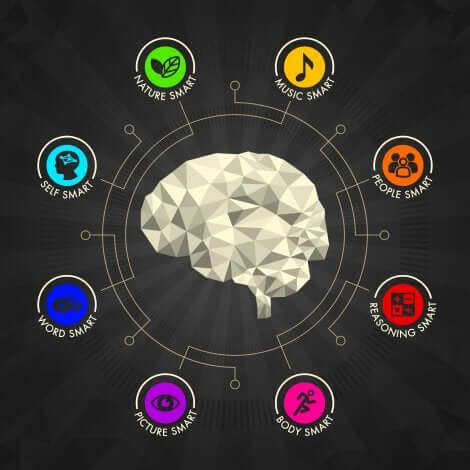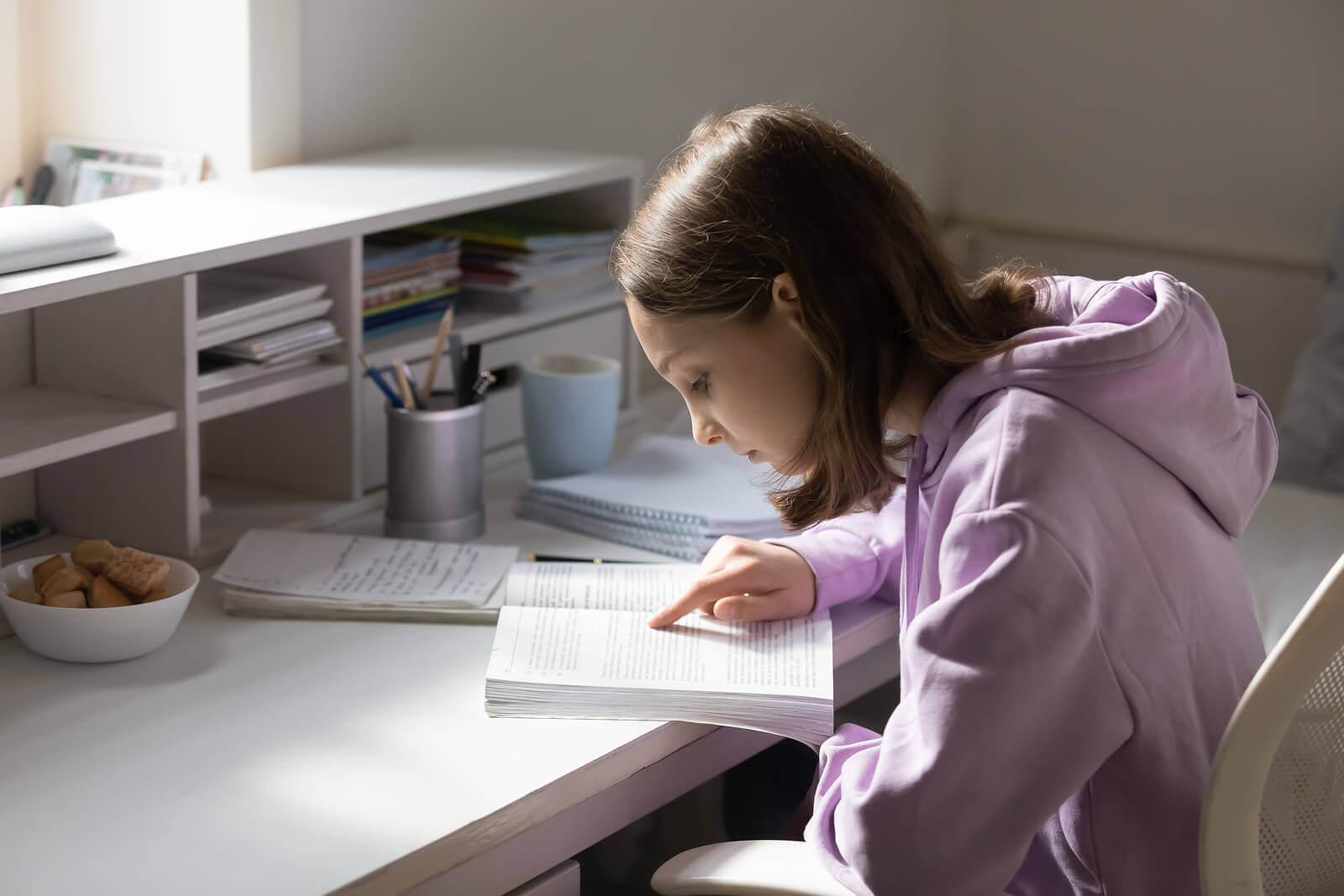7 Study Techniques for Elementary School Kids

The school dropout rate before completing high school is rising. Can study techniques for elementary school kids help?
Teaching kids effective study techniques is a fundamental task that can save you lots of headaches in the future. Among them, they can help prevent kids from failing at school.
Study techniques should be a fundamental part of children’s routine. Not only do they help get better results, but they also make studying less of a tedious task. The key isn’t to study longer, but to get the best performance possible while studying.
What do study techniques give us?
Advantages of study techniques for elementary school children
Study techniques are a series of strategies and activities that in a mechanical, autonomous and systemized way, help students internalize concepts without needing boring or useless memory sessions.
They help boost motivation and interest in the subjects by helping children learn in a more fun way. It’s important to make sure that your kids learn by playing, and a good way of doing this is by using ICT (Information and Communication Technologies) at home.
“In play, a child is always above his average age, above his daily behavior; in play, it is as though he were a head taller than himself.”
– L. Vygotsky (psychologist and pedagogue) –

On the other hand, this type of autonomous learning boosts children’s self-esteem when carrying out these tasks without their teacher. As a result, it promotes the development of their imagination and creativity when solving problems. However, you need to be careful to also teach them to ask for help when they need it.
Why use study techniques in elementary school
Teaching kids how to study isn’t easy. There are many factors to take into account to prevent them from feeling frustrated if they don’t reach their goal at first. It’s a long-distance race to teach kids to use study skills daily and not think of it as just an obligation.
“I believe that the purpose of education is to master the fundamental ways of knowing.”
– Howard Gardner (psychologist) –
One of those factors to take into account is what Howard Gardner called “Theory of Multiple Intelligences” which states that intelligence shouldn’t be measured based on an IQ standard. It explains that there are different types of intelligences that reflect a range of skills and, therefore, different needs when studying.
Study techniques that we can apply
Based on Gardner’s theory, it’s important to offer children study techniques that best suit their intellectual profile. We can’t name them all, so we’ll give you an example of ones we consider to be important in a study session.
- Reading: Do this first – a quick and comprehensive read – to get a general idea of the text. Then, read it again, slower, to get the main ideas.
- Underlining: Highlight the main ideas of the text to be able to identify them at a glance. But be careful not to underline entire sentences.
- Summary: Summarize the key ideas of the text that can help you review the topic after studying it.
- Outline: Make an outline with the main ideas. It shouldn’t have a lot of words. You can use whatever you like best: bullet points, numbers, arrows, etc.

- Marginal notes: It’s very important that during the second reading, you make annotations on the sides of the text as a preliminary outline to separate the most important points.
- Comparative tables: They’re very useful when you have to relate characteristics of similar elements. For example: the properties of planets.
- Mind maps: This is a must for visual learners. Interrelate the main ideas with arrows, and you can have all the most important points on one page.
- Flash cards: They can help when you have no choice but to memorize information. By doing them, you can sort and classify information. In fact, it’s a very useful technique for classes like history or chemistry.
There are lots of other techniques for elementary school children, but we hope these will be useful to teach your children how to enjoy learning.
The school dropout rate before completing high school is rising. Can study techniques for elementary school kids help?
Teaching kids effective study techniques is a fundamental task that can save you lots of headaches in the future. Among them, they can help prevent kids from failing at school.
Study techniques should be a fundamental part of children’s routine. Not only do they help get better results, but they also make studying less of a tedious task. The key isn’t to study longer, but to get the best performance possible while studying.
What do study techniques give us?
Advantages of study techniques for elementary school children
Study techniques are a series of strategies and activities that in a mechanical, autonomous and systemized way, help students internalize concepts without needing boring or useless memory sessions.
They help boost motivation and interest in the subjects by helping children learn in a more fun way. It’s important to make sure that your kids learn by playing, and a good way of doing this is by using ICT (Information and Communication Technologies) at home.
“In play, a child is always above his average age, above his daily behavior; in play, it is as though he were a head taller than himself.”
– L. Vygotsky (psychologist and pedagogue) –

On the other hand, this type of autonomous learning boosts children’s self-esteem when carrying out these tasks without their teacher. As a result, it promotes the development of their imagination and creativity when solving problems. However, you need to be careful to also teach them to ask for help when they need it.
Why use study techniques in elementary school
Teaching kids how to study isn’t easy. There are many factors to take into account to prevent them from feeling frustrated if they don’t reach their goal at first. It’s a long-distance race to teach kids to use study skills daily and not think of it as just an obligation.
“I believe that the purpose of education is to master the fundamental ways of knowing.”
– Howard Gardner (psychologist) –
One of those factors to take into account is what Howard Gardner called “Theory of Multiple Intelligences” which states that intelligence shouldn’t be measured based on an IQ standard. It explains that there are different types of intelligences that reflect a range of skills and, therefore, different needs when studying.
Study techniques that we can apply
Based on Gardner’s theory, it’s important to offer children study techniques that best suit their intellectual profile. We can’t name them all, so we’ll give you an example of ones we consider to be important in a study session.
- Reading: Do this first – a quick and comprehensive read – to get a general idea of the text. Then, read it again, slower, to get the main ideas.
- Underlining: Highlight the main ideas of the text to be able to identify them at a glance. But be careful not to underline entire sentences.
- Summary: Summarize the key ideas of the text that can help you review the topic after studying it.
- Outline: Make an outline with the main ideas. It shouldn’t have a lot of words. You can use whatever you like best: bullet points, numbers, arrows, etc.

- Marginal notes: It’s very important that during the second reading, you make annotations on the sides of the text as a preliminary outline to separate the most important points.
- Comparative tables: They’re very useful when you have to relate characteristics of similar elements. For example: the properties of planets.
- Mind maps: This is a must for visual learners. Interrelate the main ideas with arrows, and you can have all the most important points on one page.
- Flash cards: They can help when you have no choice but to memorize information. By doing them, you can sort and classify information. In fact, it’s a very useful technique for classes like history or chemistry.
There are lots of other techniques for elementary school children, but we hope these will be useful to teach your children how to enjoy learning.
All cited sources were thoroughly reviewed by our team to ensure their quality, reliability, currency, and validity. The bibliography of this article was considered reliable and of academic or scientific accuracy.
- Andrés Tripero, T. (enero 2011). Vygotsky y su teoría constructivista del juego. Recuperado de: www.ucm.es
- Sanz Chacón, C. (última consulta octubre 2019). Inteligencias múltiples de Gardner. Recuperado de: www.elmundodelsuperdotado.com
- VIU (17 noviembre 2015). Las técnicas de estudio mejor valoradas para niños de primaria. Recuperado de: www.universidadviu.es
This text is provided for informational purposes only and does not replace consultation with a professional. If in doubt, consult your specialist.








